Detection
Very high reflectivity echoes are subjectively defined as echoes greater than 60 dBZ. It is around this subjective reflectivity threshold that the scattering hydrometeors are likely to contain large hailstones.
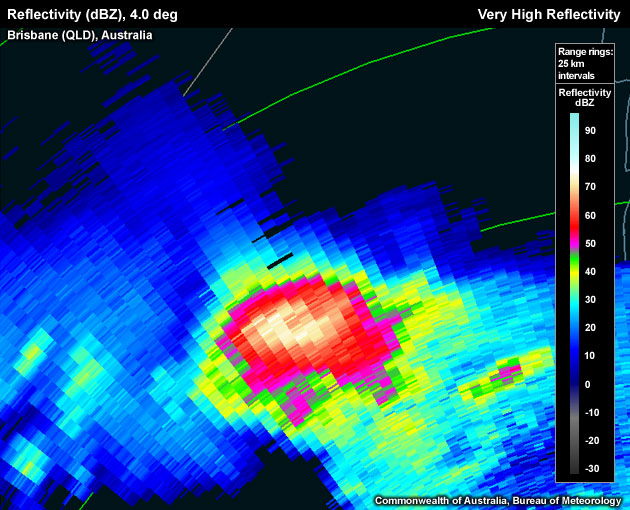
Core containing approximately 75 dBZ returns almost certainly indicates large hail. Optimum high reflectivity returns are around the freezing level where hailstones are at their maximum size and develop a coating of water that maximises their effectiveness as radar targets.
Consideration of the height of the high reflectivity is required, as a 60 dBZ echo above the freezing level is likely to be large hail. On the other hand, a 60 dBZ echo below the freezing level, could be either large hail or a large amount of precipitation. To determine if the signature you are seeing is very high reflectivity use the following technique:
Reflectivity: PPI/Plan View
- Step up and down the elevation scans until you find the strongest core.
- Move the cursor over the pixels. Note: make sure you have zoomed in enough to clearly delineate between each individual pixel.
- Read off the dBZ value from the scale bar on the right hand side of the PPI window, or the cursor data window, or the info bar at the bottom of the PPI window (varies with radar display software).
- Record the highest dBZ value.
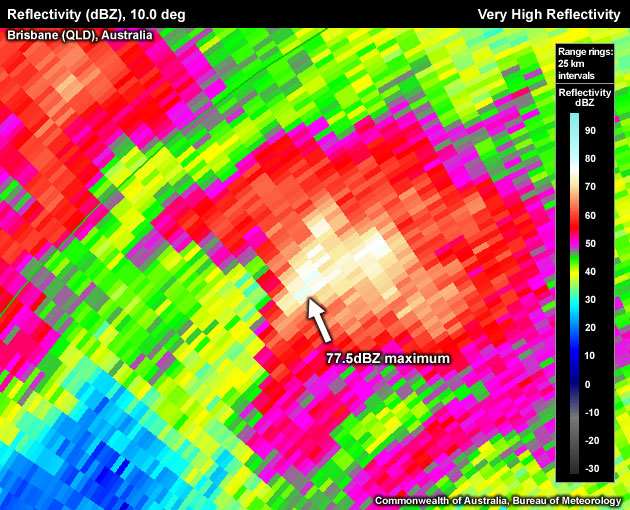
Manually scanning the reflectivity pixels shows the maximum reflectivity as 77.5dBZ.
Alternatively, overlay the WDSS or TITAN algorithm properties table. These values are approximate values,and not likely to contain the extreme values, as these algorithms remap the raw reflectivity data onto a different grid.
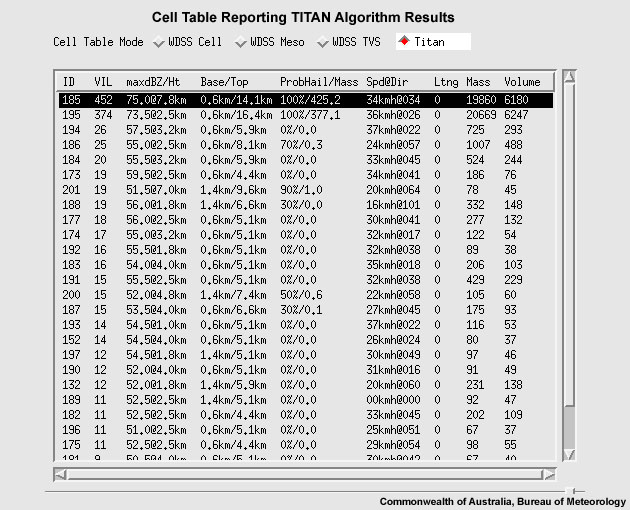
TITAN algorithm reporting the maximum reflectivity as 75 dBZ at 7.8 km
Note that even large hail might not show up as high reflectivities if it is very dry.
Potential Difficulties in Detection
- Attenuation – Especially on C–band radars, reflectivities in cores that are located downrange of another intense core are underestimated in intensity.
- Radar proximity – If a thunderstorm is too close to the radar, the beam may undershoot the signature
- "Noisy" data – Occasional, usually isolated, "hot" reflectivity pixels not representing the true energy scattered by large hydrometeors (eg. ground clutter).
Examples of Very High Reflectivity
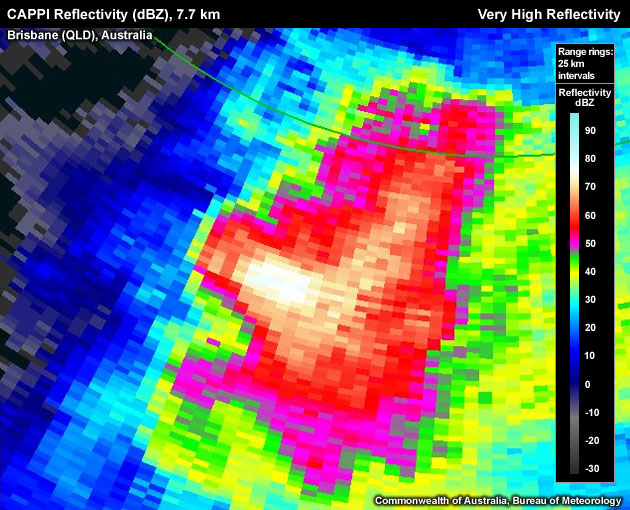
Core containing approximately 77 dBZ returns almost certainly indicate large hail.
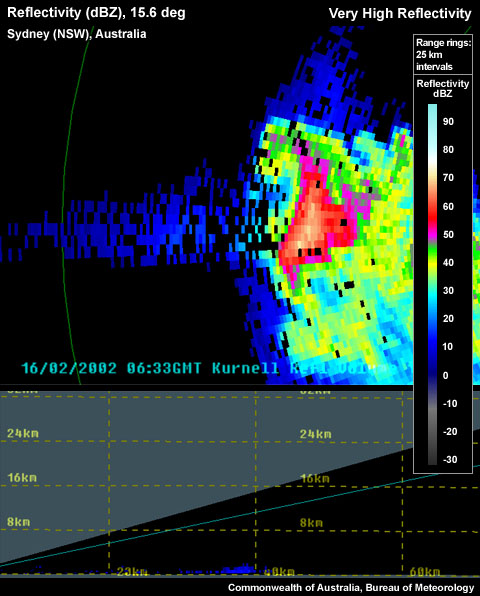
Core containing approximately 70 dBZ returns almost certainly indicate large hail. A Three-Body Scatter Spike (TBSS) is also evident downrange of the storm.
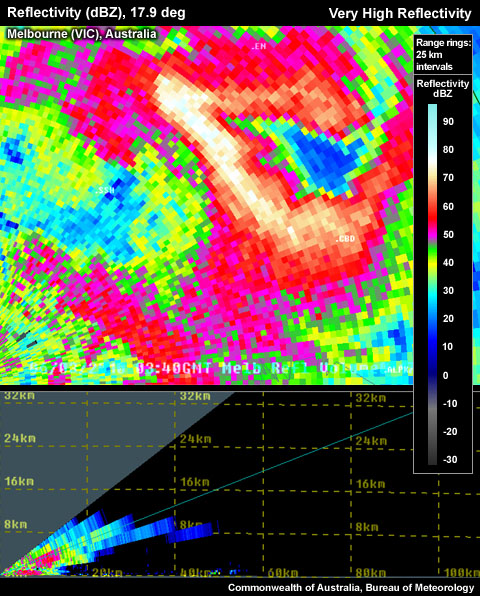
Core containing approximately 78.5 dBZ returns almost certainly indicate large hail.
Look–a–Likes
- "Noisy" reflectivity data – can produce meteorologically incorrect reflectivity returns that can appear to resemble extreme values (eg. ground clutter).
- Ground clutter – storm needs to be close to the radar.
